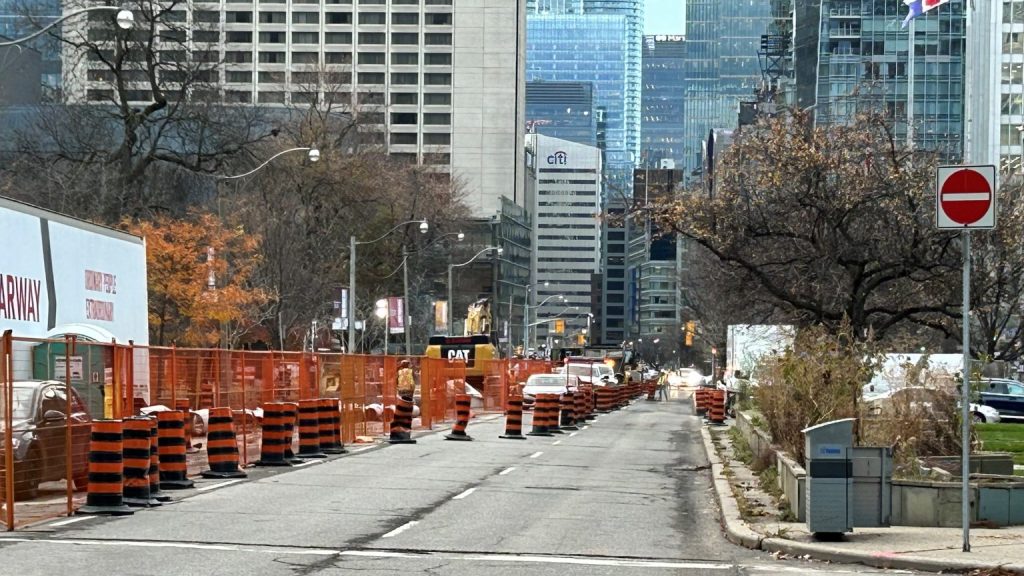Why is road work such a challenge during winter?
Posted February 21, 2024 1:12 pm.
Last Updated February 21, 2024 1:23 pm.
During the wintertime, most road construction projects take a pause as crews hunker down to wait for warmer temperatures.
But sometimes, the freezing cold can cause watermains to break or potholes to form, and repairs to the roadway simply can’t wait.
Jennifer Graham Harkness – executive director with the City of Toronto’s Engineering and Construction Services – told CityNews there’s a reason paving projects are typically not planned in cold temperatures.
“In the wintertime, it’s difficult to put down good quality asphalt,” Graham Harkness said.
“Typically, asphalt doesn’t get placed in temperatures below five degrees Celsius because it’s just not workable and the durability of the final product just isn’t there.”
“So, what we’ll do is, we’ll put down a temporary layer of asphalt, and we’ll come back later and make a more detailed and permanent repair when the temperatures are better, and the asphalt can be placed with better quality.”

Ontario’s Ministry of Transportation told CityNews it has restrictions in place which prevents paving work in winter unless it’s on an emergency basis.
“Placing hot asphalt on cold or frozen ground will cause rapid cooling of the asphalt and will affect its durability and performance,” an MTO spokesperson said.
“When asphalt must be placed in the winter in frozen conditions, it would only be done as a holding strategy to get us through the winter until it can be placed properly within our required standards. MTO specifications restrict paving below 2C on granular surfaces and below 7C for the asphalt surface.”
Related: Road construction, TTC track work to impact King Street for next 10 months
The MTO says cold weather also has a major impact on the equipment and materials used in repair work.
“Cold weather causes fluids in construction equipment to thicken, which tends to slow down the equipment and cause increased wear and tear on the components. Also, granular and earth materials used for road construction need to be kept from freezing during their installation,” the MTO said.
When roadways are covered in snow and ice, the repair process can become even more challenging.
“Highway snow clearing operations takes priority over construction – and additional time is also required to clear fallen snow off of the equipment and the work site – as required,” an MTO spokesperson said.
“Digging through frozen ground is also more challenging – and will take additional time compared to completing the same work in the summer months.”

Graham Harkness tells CityNews the clearing of snow and ice also promotes safety.
“[Drivers are] not only navigating the construction area, they’re also trying to navigate through winter weather conditions,” Graham Harkness said.
“We want to make sure that the construction workers are safe, as well as those who are travelling through the work zone.”
Despite these challenges, there are some things crews can get done in winter.
“Rock blasting, excavation and placement, which are not dependent on the weather, can be easily completed in the winter,” the MTO said.
“Similarly, production of granular material is done quite often in the winter as it helps accelerate construction by having the materials ready for placement as soon as construction starts up in the spring.”
Graham Harkness says many underground projects can also continue through the winter.
“We can work below the ground, below the frost line. We can do water and sewer replacement,” Graham Harkness said.
“But we just want to make sure that materials, where durability and quality is important, we want to place them at the right temperature.”








